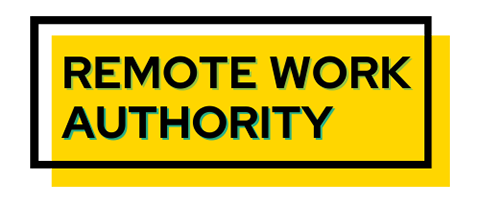Many companies now use remote workers, so employers are looking for ways to assess productivity. They must ensure remote workers do the job, meet timelines, and satisfy customers without excessive micromanaging.
How to effectively measure the productivity of remote workers has become a top concern for managers and employers. Unlike traditional office settings, remote work environments pose unique challenges when measuring employee performance and output. Without the ability to physically observe and track work activities, employers may find it difficult to gauge productivity levels and identify areas for improvement.
This article explores some effective methods for measuring remote worker productivity. We discuss key performance indicators (KPIs) that help employers track productivity and strategies for setting goals and communicating expectations with remote employees.
Table of Contents
What Are The Pros And Cons Of Remote Work?
Pros of Remote Work:
- Increased Flexibility – Remote work allows employees to work from anywhere, making it easier to manage work-life balance and adapt to unexpected circumstances.
- Reduced Commute Time – Remote workers save time and money by not having to commute to an office, reducing stress and improving overall well-being.
- Increased Productivity – Remote workers often report higher productivity levels without the distractions of a traditional office environment.
- Cost Savings – Employers save on office space and overhead costs, while employees save on transportation, clothing, and other expenses associated with working in an office.
- Access to a Larger Pool of Jobs for Workers and Talent For Employers – Employers can recruit from a larger pool of candidates since physical location is no longer a barrier to hiring.

Cons of Remote Work:
- Difficulty with Communication – Remote workers may struggle with communication and collaboration, leading to misunderstandings and reduced productivity.
- Lack of Social Interaction – Without the face-to-face interaction of a traditional office, remote workers may experience feelings of isolation and loneliness.
- Reduced Visibility – Remote workers may be overlooked for promotions and opportunities due to their lack of physical presence in the office.
- Potential for Distractions – Without the structure of an office environment, remote workers may be more susceptible to distractions, such as household chores or family obligations.
- Dependence on Technology – Remote workers rely heavily on technology, which is challenging if there are technical or internet connectivity problems.
What Are Three Ways To Measure Productivity For Remote Workers?
Assessing productivity in a remote context requires clear communication, goal-setting, and performance-tracking strategies. Managers assess productivity by reviewing the quantity and quality of work and timeliness remote workers achieve and comparing it to established standards and expectations. Regular check-ins with remote employees help managers monitor progress toward these goals and provide feedback on areas for improvement.
Employers ensure their remote teams meet expectations and contribute to company success by establishing a system that measures and tracks remote worker productivity.
- Key Performance Indicators (KPIs): Establishing KPIs for each remote worker help managers track their performance against specific goals and objectives. KPIs are based on metrics such as completed tasks, quality of work, or customer satisfaction ratings.
- Time Tracking Software: Time tracking tools allow managers to monitor remote workers’ time on specific tasks and projects. This data can identify areas where workers may be spending too much or too little time and make necessary adjustments.
- Performance Reviews: Regular performance reviews allow managers to discuss progress toward goals, identify areas for improvement, and provide feedback on job performance. These reviews are conducted via video conferencing or phone calls to simulate face-to-face interactions.

How Do You Evaluate Remote Work?
Is Productivity The Only Metric?
Evaluating remote work requires a multi-dimensional approach considering various factors beyond productivity as defined as “quantity.”
The true definition of productivity varies by the type of job. It is often measured by the number of tasks done, but quality and efficiency are major components. While it might be appropriate to expect that workers process 10 insurance applications an hour, spend five minutes or less on customer service calls, or output 200 keystrokes per hour, the number done might not be an appropriate metric for writers, graphic designers, or engineers.
Good managers evaluate remote work based on the quality of work produced and adherence to established standards and expectations. They consider communication, collaboration, creativity, and job satisfaction criteria and even look at metrics like meeting deadlines, responsiveness, and attendance to evaluate remote work.
Regular check-ins and progress updates help managers monitor productivity and identify areas for improvement.
One effective method is to use team member engagement surveys to measure remote worker engagement and job satisfaction. The theory is that engaged, happy workers are more productive.
Quantity is not the only – or best – metric for evaluating remote work. A holistic approach is necessary to ensure that remote workers perform.
How To Measure The Productivity Of Remote Workers With No Supervision?
Measuring the productivity of remote workers with no supervision requires a more autonomous approach where workers hold themselves responsible for getting the work done. One solution is to provide remote workers with self-assessment tools that allow them to evaluate their productivity and performance. Additionally, managers can set up automated performance reports that provide regular feedback on progress toward established goals and metrics.
By leveraging these strategies, employers can accurately measure the productivity of remote workers, even when direct supervision is not possible.

What Are KPIs For Working From Home?
Key Performance Indicators (KPIs) for working from home depend on company goals and priorities, but some standard metrics include the following:
- Output and quality of work
- Meeting deadlines and objectives
- Customer satisfaction and feedback
- Sales and revenue generated
- Time management and productivity
- Attendance and availability
How Do Companies Decide?
Companies decide on their KPIs based on their specific business needs and objectives. Some companies may prioritize output and quality of work, while others may focus more on sales and revenue. It is important to select KPIs relevant to remote workers’ job responsibilities and align them with the company’s overall strategy.
Additionally, KPIs should be measurable and trackable so that progress is monitored and adjustments made as needed. By selecting the right KPIs, companies can effectively measure the performance of their remote workers and ensure that they meet established standards and expectations.
What Are The Benefits And Drawbacks Of Measuring Remote Worker Productivity?
Pros
The benefits of measuring remote worker productivity include having the numbers that show the results of work. The figure might show that sales are increasing or response time is improving, which shows progress toward meeting goals and objectives.
Looking at the numbers also identifies areas of improvement and adherence to established standards and expectations.
Additionally, measuring productivity helps employers identify top performers and reward them accordingly, boosting team member morale and retention.

Cons
However, there are also drawbacks to measuring remote worker productivity, such as the potential for increased stress and burnout among employees. Measuring remote productivity is also challenging, as some metrics may not apply or accurately reflect the nature of the job.
Finally, measuring productivity sometimes leads to a culture of micromanagement and distrust, negatively affecting employee engagement and job satisfaction.
Employers should carefully consider these factors when deciding whether and how to measure the productivity of their remote workers.

What Are Some Indications That Remote Work Is Not Working?
Some Jobs Are Not Suited To Remote Work
While many jobs can be done remotely, some are not well-suited to remote work due to their nature and requirements. Some examples of these include:
- Those requiring in-person interaction, such as customer service, hospitality, and healthcare. A hospital scheduler might work from home but not a brain surgeon.
- Ones that require specialized equipment or tools not available remotely, such as laboratory work or heavy machinery operation.
- Jobs that require constant supervision or hands-on training, like apprenticeships or internships.
- Roles involving highly sensitive or confidential information, such as certain government positions or legal work.
Some Job Dynamics Just Don’t Translate Well To The Remote World
There are several indications that remote work may not be working, including the following:
- A lack of communication or collaboration between remote workers and in-office employees leads to misunderstandings and missed deadlines.
- Remote workers struggle to adapt to a remote work environment resulting in decreased productivity or quality of work.
- Lower morale and job satisfaction result from increased isolation or disengagement from remote working.
- Difficulty in maintaining a work-life balance, which affects employee well-being and job performance.
- The lack of access to necessary resources or tools for remote work hinders productivity and effectiveness.
- Increased conflicts or tension between remote workers and in-office employees causes a team dynamics and communication breakdown.
If any of these indicators are present, it may be necessary to reassess the remote work arrangement and make adjustments.
Some Further Aspects Of Remote Work Productivity
In the midst of the pandemic, remote work became the norm for many companies, making it important to measure remote employee productivity. Business leaders utilized project management software, collaboration tools like Zoom, Trello, and Slack, and monitoring software to measure productivity metrics, set achievable milestones, and track deliverables. These tools continue to be useful.
By implementing effective project management and monitoring strategies, companies can measure remote work productivity and ensure that their employees work towards achieving common goals as a cohesive team, regardless of locations causing different working hours or digital marketing initiatives.


